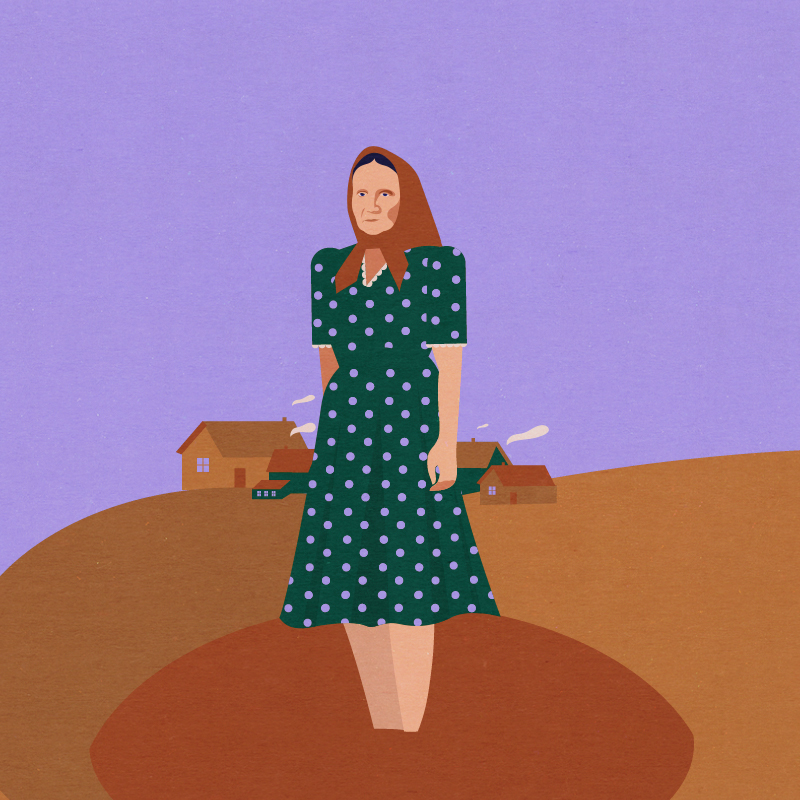Žemaitė – a Noble Farmer Who Became the Most Famous Lithuanian Writer
> BACK TO 100 STORIESListen to this text (Lithuanian):
If we had to choose the most famous Lithuanian writer, Žemaitė would be one of the most serious nominees. Literary historians claim that Lithuanian prose was born with Žemaitė’s short stories written at the end of the nineteenth century. Today, children read these works in schools, streets are named after the writer, and monuments have been built in her honour. The image of Žemaitė was even included on a one litas banknote – the Lithuanian currency before the introduction of the euro. Such popularity means that there is a lot of false information about the writer’s life.
One of the greatest misconceptions about Žemaitė is that she was an uneducated villager. In fact, Žemaitė – Julija Beniuševičiūtė – was born in 1845 to a noble family. As befitting a member of the nobility, she received an excellent education – she studied at home, then at the Šėmai manor with her aunt. From a young age she was curious, hot tempered, brave, and independent. Her marriage to Laurynas Žymantas, who didn’t belong to the nobility and worked as a forester – was a challenge to the social norms of the time. Although she had creative plans before the wedding, she had no time to write after she got married – she worked on a farm and raised six children.
Everything changed in 1884 when she met the writer Povilas Višinskis, who was actively participating in the Lithuanian national revival. Žemaitė received books and illegal newspapers in Lithuanian from him. Her readings and conversations with this young intellectual inspired her to start writing. At that time, Žemaitė was almost fifty. So her debut as a prose writer was quite late. She chose Žemaitė as a nickname on the advice of Višinskis and Jonas Jablonskis – the editor of Ūkininko Kalendorius (‘The Farmer's Calendar), where her first work Rudens Vakaras (‘The Autumn Evening’) was published.
Žemaitė started writing even more after her husband died in 1898. In addition, she took up social activism: she contributed to the national revival movement, became a women's rights activist, and took care of war refugees. Žemaitė survived imprisonment in 1915, when she was at an advanced age, which shows that she was exceptionally courageous and energetic. She was imprisoned because an article criticising the government was published in the newspaper Lietuvos Žinios (‘News of Lithuania’) that she edited. She lived in the United States over the period of 1916–1921. Žemaitė kept wearing her headscarf even abroad – she styled it combined with both fashionable skirt suits and long country style skirts. For Žemaitė, the headscarf didn’t symbolise humility, but a rebellion against snobbish Western society and its fashion.
Žemaitė is considered a realistic prose writer. She wrote about the lives of peasants in vernacular, everyday language. The writer’s prose is still interesting today because of her lively and convincing characters – she crafted both heroes and villains with exceptional talent. By depicting the disadvantaged people, who were mostly women and children, Žemaitė criticised the society of the time, which often did not want to recognise that everyone has the right to be happy and to choose their own way of life.

